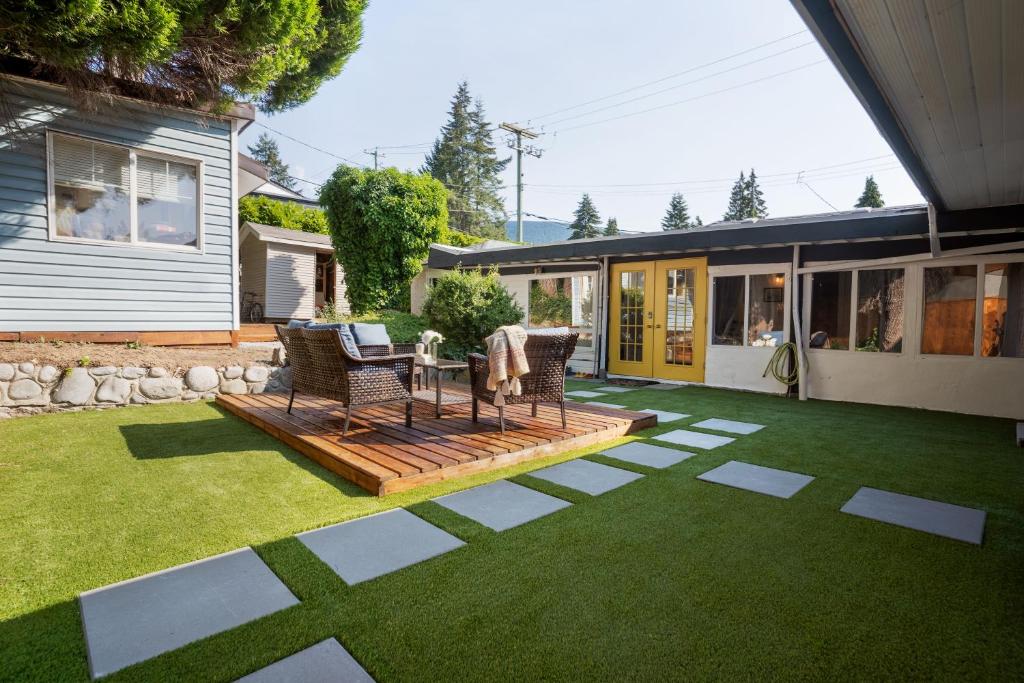In a heated real estate market like Vancouver, the idea of adding a secondary or accessory suite to your property to help offset your monthly mortgage payments is hardly new. But did you know that eligible B.C. homeowners can also qualify for up to $120,000 in government funding to help them do it?
What is a secondary suite?
While the terms are sometimes used interchangeably, there are basically two kinds of supplemental or secondary housing units that you can add to your home in Canada.
A “secondary suite” is an independent living unit that has its own separate kitchen, sleeping area and washroom, but which is completely contained inside of another home (called the “primary residence”). Both the primary and secondary units are considered to be a single real estate entity, which can’t be legally separated, stratified or sold separate from one another.
An “accessory dwelling unit” (also known as an ADU), on the other hand, is a self-contained dwelling that’s separate from, but located on the same legal lot as, a primary residence. Some common examples of ADUs include garden suites, garage suites, carriage houses and laneway homes.
The benefits of adding a secondary suite to your property
In addition to potentially being a source of steady rental revenues, adding a secondary or accessory suite to your property can help you:
provide safe and affordable housing options for adult children, aging parents or other relatives right on your own property
increase the equity and marketability of your home
share housing costs with friends or family members to pay down your mortgage sooner
provide more long-term housing and improve housing affordability in your community
Where are secondary suites allowed?
In B.C., homeowners are generally allowed to add secondary suites to most single detached homes, as well as some side-by-side attached homes. The limitations on accessory dwelling units, however, are a little more complicated.
While some communities allow homeowners to build an ADU to increase the supply of local affordable housing, other regions and communities don’t. Some municipalities also only allow ADUs in cases where the primary residence is a detached house, and there are no other secondary suites or ADUs already on the property.
As a good rule of thumb, it’s usually a good idea to check with your local municipal planning department to find out the rules for your community before you invest too much of your time or energy.
What are the rules for secondary suites in Vancouver?
The rules governing the construction and management of secondary and accessory suites can be complex. They can also vary from one province, region or municipality to another.
For residents of British Columbia, detailed overviews of all the relevant rules and regulations can be found online in the provincial government’s Home Suite Home guide to secondary units, and the City of Vancouver’s Secondary Suite website and How to Guide to Secondary Suites.
But in general, if you live in Greater Vancouver and you want to add a secondary or accessory suite to your property, be prepared to ask yourself a few questions first, including:
Have you met with a local government planner to find out the permitting requirements?
Is your home large enough to accommodate a complete secondary suite?
Does your property meet the zoning requirements for a secondary suite or ADU?
Do you have enough parking for the extra people who will be living there?
Does your home meet the Building Code requirements for an ADU, including minimum requirements for ceiling heights, emergency exits and ventilation?
Have you obtained a building permit before starting any construction?
If you’ll be renting the unit out, do you know and understand your rights and responsibilities as a landlord?
What about that $120,000?
To increase the affordability and supply of housing in B.C., both the federal and provincial governments now offer several programs that provide funding to help homeowners add secondary or accessory units to their properties.
Federally, the Canada Secondary Suite Loan Program will give qualified homeowners up to $80,000 in low-interest loans to add a secondary suite to their home. The program, which is expected to begin early this year, will provide loans for up to 15 years at a 2 per cent rate of interest. It also comes with changes to the federal mortgage insurance rules, to make it easier for homeowners to access the equity in their homes when building a secondary suite.
Provincially, BC Housing offers eligible homeowners loans for up to $40,000, or 50 per cent of the construction costs, to build a secondary suite through its Secondary Suite Incentive Program (SSIP) – a three-year pilot program that was launched in April 2024.
Best of all, the provincial loan is also forgivable – which means that if you follow certain terms and conditions set out in the program (like making sure the property remains your Principal Residence, and agreeing to rent the secondary suite out at below-market rates to someone who isn’t part of your immediate family), you won’t need to pay it back!
Together, these programs can give qualified homeowners in B.C. up to $120,000 to help with the cost of planning, designing and constructing a secondary suite on their property – a pretty attractive incentive for something that’s already a win-win-win for many homeowners, their families, and the Greater Vancouver community.
